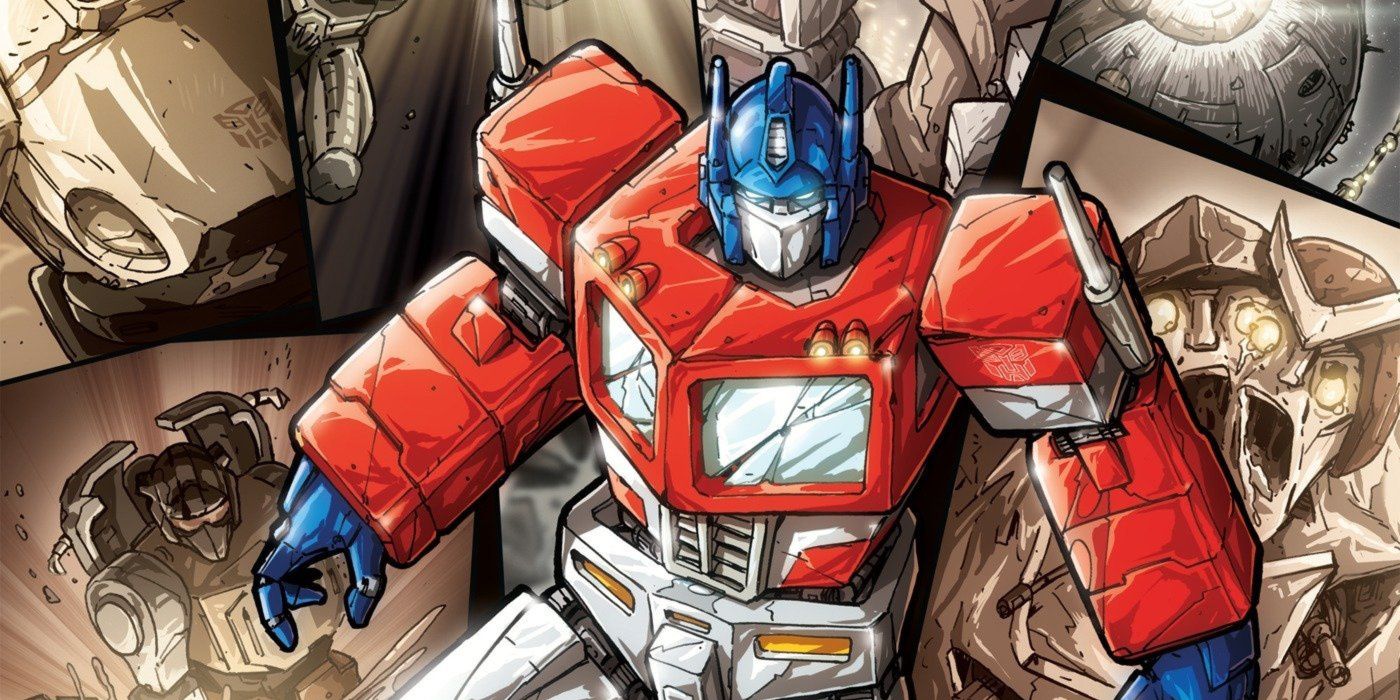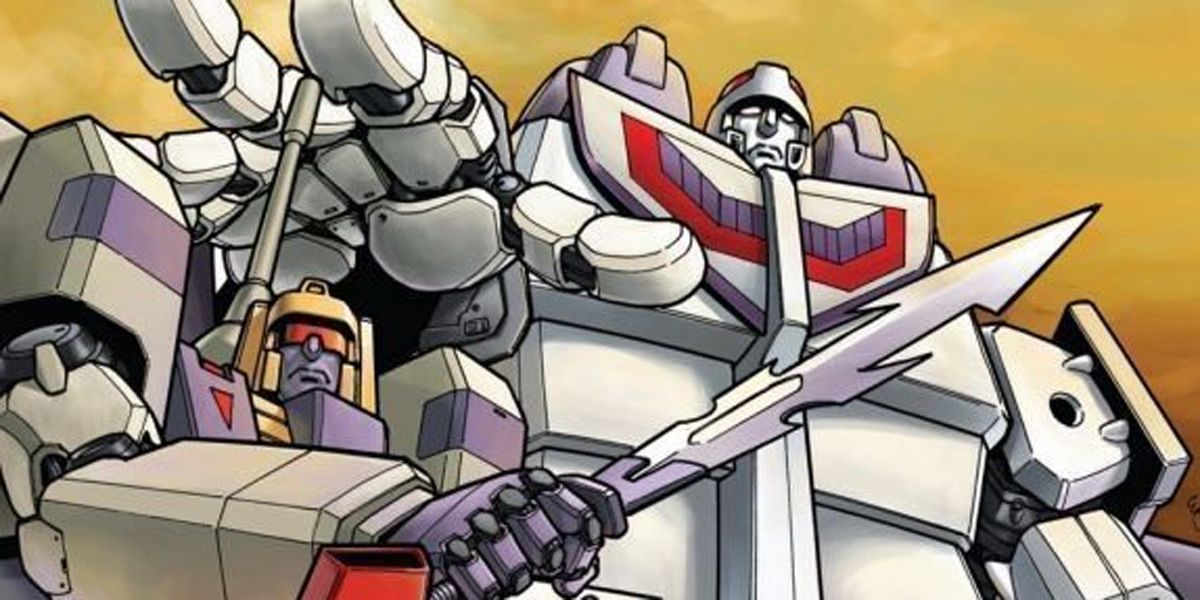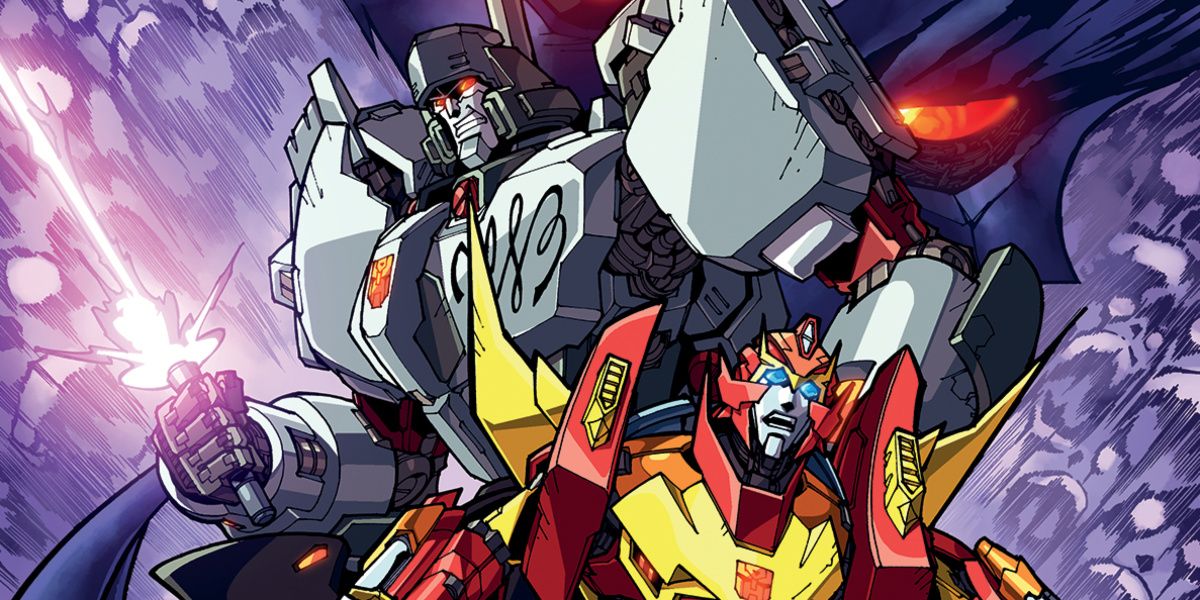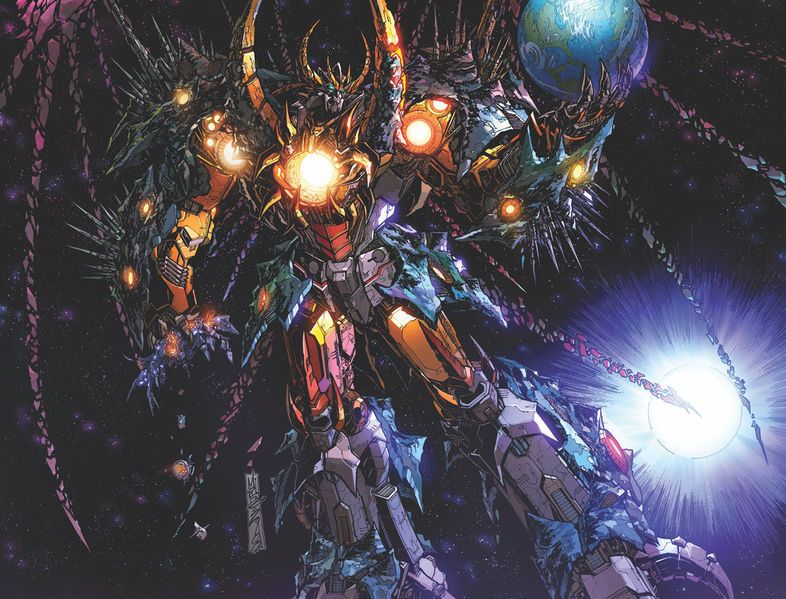This month saw the quiet conclusion of one of the longest-running continuities in modern comics, and arguably of the best. After 13 years and hundreds of issues, IDW Publishing's Transformers line ended with the release of Optimus Prime #25 and Transformers: Unicron #6. The line's most acclaimed title, Transformers: Lost Light, bid farewell just a week earlier with its 25th issue.
The company will relaunch the comics franchise in March with a series that centers on the origin of the war between the Autobots and Decepticon for their home world Cybertron.
It's no exaggeration to say that without the Transformers license, IDW wouldn't be the publisher it is today. The company released its first issue, Transformers: Infiltration #0, in 2005, after acquiring the comics license following the implosion of previous rights-holder Dreamwave. At the time, IDW's only bona fide success was 30 Days of Night, but the warm reviews and brisk sales of Infiltration and subsequent Transformers miniseries, ongoings and one-shots allowed IDW to continue a mutually beneficial relationship with Hasbro and rise to become one of the top comics publishers, alongside Marvel, DC, Image and Dark Horse.
RELATED: Transformers: Lost Light Is the Franchise's Most Progressive Story, Ever
With the line that made its publisher, as well as the fortunes and reputations of several creators (while fostering one of the tightest fanbases in comics along the way), coming to an end, we traveled to this year's TFCon in Rosemont, Illinois, to talk to several Transformers comics writers and artists about their work on the line, what they think about its end and what the legacy of the IDW line is.
From Out of the Ashes
From the beginning, the talent pool IDW recruited drew from Transformers comics history. The initial architect was Simon Furman, writer of the majority of Marvel's Transformers comics in the 1980s, who penned several miniseries for IDW introducing the new continuity: A modern-day retelling of the Generation One (1980s) premise with adult, human characters and a decompressed approach borrowed from Marvel's Ultimate line.
Several artists who had worked on Dreamwave's Transformers comics (sometimes with Furman) were also enlisted. Chief among them were colorist Josh Burcham and artist Alex Milne. Burcham had some contacts at Hasbro, and when the toymaker informed him that IDW now had the license, he reached out to Editor-in-Chief Chris Ryall. Initially turned down, he later served as a fill-in colorist on Infiltration after IDW hired him to do comics based on the Transformers line Beast Wars on the recommendation of artist Don Figueroa. Trying to be "as non-Dreamwave as possible," as he put it, led to a long association with the line that continues to this day in the current Star Trek vs. Transformers miniseries.
RELATED: Universal Theme Park Turns Megatron Into a Stand-Up Comedian
At Dreamwave, Burcham, Milne and others had been bound to a certain house style, specifically founder Pat Lee's. But at IDW, there were no such restrictions. Milne, whose tenure as the main artist on Transformers: More Than Meets the Eye was acclaimed for his highly detailed style and expressive facial work (even on characters without mouths), described IDW as "far more permissive and open" than Dreamwave.
Similarly, Josh Perez, a colorist who, like Burcham, began working for Dreamwave and then switched to IDW, described IDW as "extremely permissive" with artistic direction, noting that "[they] let me be more open." Perez and Burcham both do their own flatting (the work of preparing the inked pencils for coloring) and described IDW as comfortable with evolutions and permutations of their style that they applied to various projects.
Burcham said he derives lighting cues and coloring ideas from both script and artwork, which led to him trying to keep it "simple" on Milne's More Than Meets the Eye artwork, so as to not cover up all that detail. For main series artist Kei Zama's energetic style on Optimus Prime, he chose a more "retro" palette. Perez, who said he enjoyed the "simpleness" of working on ROM vs. Transformers: Shining Armor (a crossover between the Transformers and ROM the Space Knight) described IDW as open and accommodating, and Hasbro as very cooperative to work with.
NEXT PAGE: IDW's Experimentation Led to the Most Controversial Transformers Arc, Ever
Making History
That willingness of Hasbro's to allow for such experimentation -- visually and otherwise -- was echoed by several others we talked to at TFCon, most notably James Roberts. The writer of More Than Meets the Eye and Lost Light, Roberts had more convention attendees lining up at his table than every other guest (even bona fide celebrities) and received a variety of handmade gifts from fans, like pencil bags and pillowcases. He had nothing but good things to say about Hasbro.
Roberts said that everything he wanted to do in his run -- which was part of "Phase Two" of IDW's Transformers continuity, in which the Autobot-Decepticon war, at long last, ended -- was met with support from the toy giant. He and John Barber, who edited More Than Meets the Eye and is himself the second most prolific Transformers comics writer of all time, worked directly with Hasbro to flesh out the "Dark Cybertron" storyline, which ran from 2013-2014 and celebrated the brand's 30th anniversary. Roberts, Barber and artist Phil Jimenez (who did layouts for the first and final chapters of the story) were flown to Hasbro headquarters in Rhode Island to help plan the event -- a necessity, as much of the event's issues were packaged with concurrently released toys.
It was at those planning sessions that what's easily the most controversial decision in the line's history was born: Making Megatron an Autobot. "That was a suggestion from somebody at Hasbro," said Barber, "but obviously it resonated with all of us."
Roberts said, "It took only those initial four words,'Megatron becomes an Autobot,' to kickstart the idea, but I knew it would be a ton of creative labor to get to that point." That point involved a change of heart undergone by the Decepticon warlord over the course of the event, resulting in him declaring himself an Autobot and joining the More Than Meets the Eye cast in their goal to find the mythical Knights of Cybertron and usher in a new golden age.
While Roberts, artist Alex Milne, Burcham, fellow colorist Joana Lafuente and others were off in More Than Meets the Eye and, later, Lost Light, charting their own daffy Justice League International-inspired path (Roberts said the iconic '80s comic by J.M. DeMattis and Keith Giffen was a "huge influence"), Barber and artists like Andrew Griffith, Livio Ramondalli and others were telling the story of post-war Cybertron in The Transformers: Robots in Disguise (later renamed The Transformers to avoid confusion with the 2015 cartoon of the same name), which later became Optimus Prime.
Initially, Barber's story was more about the politics of a reunited Cybertron (something that was also explored in the Transformers: Windblade and Till All Are One comics written by Mairghread Scott), but the focus shifted to Earth after "Dark Cybertron." This decision eventually led to Optimus Prime annexing Earth into the Cybertronian Council of Worlds as its 13th colony. Such a move was heralded by Hasbro and IDW as launching a "Hasbro Universe," folding virtually all comics based on Hasbro properties and published by IDW into a single, unified continuity.
Even with events like ex-Decepticon Skywarp joining the ranks of G.I. Joe and the characters from the obscure toyline Visionaries appearing on Cybertron, the Transformers comics stayed on course. They told the stories they wanted to until Free Comic Book Day 2018 kicked off Transformers: Unicron.
Unicron saw the title character -- the famous antagonist of 1986's The Transformers: The Movie -- emerge seemingly from nowhere and laying waste to the universe. Eventually established to be part of a gambit by Decepticon tactician Shockwave dating back to the dawn of time, Unicron made his way to Cybertron then to Earth, where, as ancient prophecy foretold, he confronted the legendary Cybertronian "the Arisen," who turned out to be Optimus himself.
NEXT PAGE: What Does the Future of Transformers Comics Look Like?
Toward the Future
After several delays, the final issues of Unicron, Optimus Prime and Lost Light released this last November. All ended with notes of tragedy (unavoidable in a story about the apocalypse), grace and, just as IDW has been doing all along, evolution.
Milne, who rose to superstar status with his work on More Than Meets the Eye and proved why on Unicron, said that IDW's biggest impact on the brand was "changing your perceptions of how [Transformers] comics are written and drawn proved conclusively that these are actual characters. Because Transformers are people; they're characters, not objects."
Perez echoed that by saying that IDW's known for diving into aspects of the lore that fans have never seen. "They showed you could do post-war Transformers stories," he said, adding that allowed for "more nuanced storytelling." Burcham agreed, saying that "IDW's Transformers line had a pretty massive impact with a lot more ... diversification than had been seen before" and that "the wider brand would be foolish and a shame to leave that aside."
Casey Coller, an artist who broke into steady work on variant covers and interior work for IDW by winning a fan art contest the publisher ran, stated that IDW "broke new ground with ending the war and it resonated; it was a unique and brave thing to do," noting that he was proud to have been a part of it.
Roberts, who went from working in civil service and writing well-regarded fan fiction in European Transformers fan circles to having his comics praised by The Guardian , seemed proud and humbled by his contributions to the line. "I hope it's shown an appetite for more humanized, character development in Transformers fiction," he said. "It opened doors for representation and showed that there was a proven demand; hopefully, that can continue." The longevity of his two combined titles in today's volatile comics market "is not lost on me," he added, "as was the freedom to go our own way. I doubt we'll see another Transformers title last this long."
When asked how much of a departure the future will have -- IDW will relaunch its Hasbro universe with new Transformers and G.I. Joe titles in January -- Barber was diplomatic.
"I’d never think we’ve said goodbye to anybody forever!" He said. "I think we need some new voices and some new takes on the Transformers that aren’t me, James, Mairghread Scott, Nick Roche and the other writers we’ve had recently. Again, not that everybody there will never be seen again -- and I’d work in a heartbeat with anybody on that list (and we’ve already got plans with at least a couple of them)."
"Drawing Transformers is such a unique and specific talent," he continued. "I know we’ll happily be seeing some familiar faces there, too. I mean, the group of Transformers artists we’ve amassed at IDW -- especially given that so many classic artists have been part of the family here -- is the best group of artists I’ve ever had the pleasure to work with. I wouldn’t want to lose them!"




